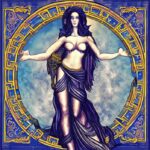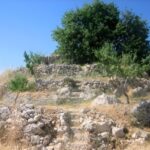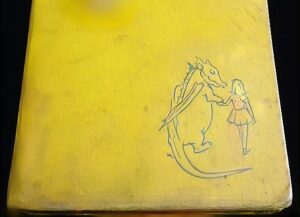The Holy Killers Of Islam And Christianity : The Secret Doctrines of The Assassins
Origins of the Nizari Ismailis
Authored by Gordon Thomas via Journey into Madness
Authored by Arkon Daraul via History of the Secret Societies
Authored by Edward Burman via The Assassins – Holy Killers of Islam
Authored by Marco Polo via Il Milione
Authored by Dante Alighieri via Divina Commedia, Inferno
Authored by Parker Ryan via The Necronomicon and Ancient Arab Magic

The Schism in Islam
“..In the year the Christian calendar calls AD 632, a schism even greater than the Reformation was to produce engulfed Islam. Its two great forces, the Sunnis and the Shi’ites, became irrevocably divided. The Shi’ites insisted that the leadership of Islam should have remained in the Prophet’s family and, upon his death, they had pledged their support to Mohammed’s cousin, Ali, who became Caliph or successor to the Prophet.”– Gordon Thomas, Journey into Madness
“One of the most successful secret societies which the Shi’as founded was centered around the Abode of Learning in Cairo, which was the training-ground for fanatics who were conditioned by the most cunning methods to believe in a special divine mission. In order to do this, the original democratic Islamic ideas had to be overcome by skilled teachers, acting under the orders of the Caliph of the Fatimites, who ruled Egypt at that time.”– Arkon Daraul, Secret Societies
“..Legend has it that Mohammed’s son-in-law Sidina ‘Ali, the ideal warrior, once became so caught up in the frenzy of killing that he began to kill his own people after finishing off the enemy. His frenzy had to be cooled down before he could stop.”– An Encyclopedia of Archetypal Symbolism
“Ali was murdered in AD 661. But, in the Shi’ite theology, Ali and his descendants were Imams – divinely guided leaders and mediators between God and Man, Christ-like figures on earth. There were twelve Imams before the last disappeared in AD 940. It is a fundamental Shi’ite belief that he is hiding in one of the vast Arabian deserts, awaiting the right moment to re-emerge and establish a purified Islamic government of justice…The Imam, on his return, would launch a jihad, a holy war, more violent than any before fought over the centuries by his Shi’ite disciples.”– Gordon Thomas, Journey into Madness
“The fundamental doctrine of the Shi’a is based upon the ta’lim, or authorized teaching. The imam was responsible for this teaching, from which no deviation at all was possible. This is the basis of the authority of the Shi’ite imams, and informs their role as descendants of Ali…” “The essential division between Shi’a and Sunni is based upon the dispute between the mutually exclusive notions that authority may be explained by ta’lim or that it may be explained by means of reason and analogy.”– Edward Burman, The Assassins – Holy Killers of Islam
“Much of the well-known mystical symbolism of Sufism, often best known through the Rubaiyat of Omar Khayyam, was taken over by the Isma’ilis. They joined Sufism and Shiism in a peculiar and unique blend, often appearing as a particular group of Sufis with their own Shaykh….It would not..be surprising if the use of hashish and other drugs for achieving mystical ecstasy was also carried over from the Sufis.”– Edward Burman, The Assassins – Holy Killers of Islam

The Old Man of the Mountains
In 1074 “the Armenian general Badr al-Jamali traveled with his army from Syria to Cairo and took effective control. From that moment, the power of the caliph was extremely limited and the real ruler of the state was the commander-in-chief of the army. the last caliphs were little more than figureheads.”
“On the death of the Caliph al-Mustansir in 1094, the new commander opposed the Caliph’s own designation of his son Nizar as caliph and placed Nizar’s brother al-Musta’li on the throne… The Isma’ilis in the East [Persia] refused to acknowledge al-Musta’li and broke off relations with the dynasty in Cairo.”
“The dissenting group proclaimed their allegiance to the by-passed Caliph Nizar, and it is for this reason that members of the sect which became known to history as The Assassins were first known as the Nizari Isma’ilis.”– Edward Burman, The Assassins – Holy Killers of Islam
“‘Assasseen’ in Arabic signifies ‘guardians’, and some commentators have considered this to be the true origin of the word: ‘guardians of the secrets’.”– Arkon Daraul, Secret Societies
“Hasan-i Sabbah was a revolutionary of genius who devised and put into practice the ‘new’ preaching or da’wa of the Nizari Isma’ilis, which was to replace the ‘old’ da’wa of the Fatimid Isma’ilis at Cairo… It is likely that he was born around 1060 in Qom, one-hundred-and-fifty kilometers south of modern Tehran.”
“He had a fine mind, an excellent knowledge of theology, and evidently possessed the phenomenal strength of will necessary to pursue his ideal for so many years… We can imagine him converting the people of Daylam just as he had himself been converted, by patiently digging away at a potential proselyte’s religious doubts until they were strong enough to admit the possibility of an alternative.”
“Hasan-i Sabbah had managed through careful theological argument and relentless logic applied to the Shi’a doctrines, to create a powerful sectarian sense of community based on the traditional secrecy and conspiratorial nature of Isma’ilism.”
“The Alborz Mountains, which rise to a maximum height of over six-thousand meters in the volcanic Mount Damavand, constitute a natural barrier between the Caspian and the vast gently tilting plateau which constitutes Central Iran. Although not distant as the crow field from Tehran, this mountainous area has always been and still is remote. It was presumably for this reason that many shi-ite sects and fleeing Isma’ilis and other Moslem heretics had… for many centuries taken refuge in the mountain kingdom of ancient Daylam.”
Within a high mountain valley stands “the castle of Alamut, the fortress retreat of Hasan-i Sabbah, which became almost legendary after the supposed 1273 visit of Marco Polo and his description of the ‘Old Man of the mountains’ and the ‘Ashishin’…”– Edward Burman, The Assassins – Holy Killers of Islam
“The Old Man kept at his court such boys of twelve years old as seemed to him destined to become courageous men. When the Old Man sent them into the garden in groups of four, ten or twenty, he gave them hashish to drink. They slept for three days, then they were carried sleeping into the garden where he had them awakened.”
“When these young men woke, and found themselves in the garden with all these marvelous things, they truly believed themselves to be in paradise. And these damsels were always with them in songs and great entertainments; they; received everything they asked for, so that they would never have left that garden of their own will.”
“And when the Old Man wished to kill someone, he would take him and say: ‘Go and do this thing. I do this because I want to make you return to paradise’. And the assassins go and perform the deed willingly.”– Marco Polo – on his visit to Alamut in 1273
“That Hasan-i Sabbah and other early Assassin Masters had gardens seems likely since the garden is such an important part of Persian noble life and of mysticism. The water channels and meticulous care to ensure regular water supplies at Assassin castles echo the care which Persian and Arab villages and country houses today give to the presence of running water. So the legend of the garden in which Assassins were taken probably has its origins in fact.”
“Many scholars have argued, and demonstrated convincingly, that the attribution of the epithet ‘hashish eaters’ or ‘hashish takers’ is a misnomer derived from enemies the Isma’ilis and was never used by Moslem chroniclers or sources. It was therefore used in a pejorative sense of ‘enemies’ or ‘disreputable people’. This sense of the term survived into modern times with the common Egyptian usage of the term Hashasheen in the 1930s to mean simply ‘noisy or riotous’. It is unlikely that the austere Hasan-i Sabbah indulged personally in drug taking.”
“There is no mention of that drug [hashish] in connection with the Persian Assassins – especially in the library of Alamut (‘the secret archives’).”
“Once established in a secure and permanent base, Hasan sent da’is [missionaries] out from Alamut in all directions, At the same time he pursued a policy of territorial expansion, taking castles either by means of propaganda or by force, and building others… Life at Alamut, and we may suppose in the other fortresses at this time, was characterized by extreme asceticism and severity.”
“Political assassination was not unknown in Islam before Hasan-i Sabbah. Earlier sects had used murder as a political technique, and there is evidence that Mohammed himself disposed of his enemies by suggesting that they did not deserve to live – and hoping that faithful followers would take the hint. There had even been an extremist Shi’ite group known as the ‘stranglers’ after their preferred method of assassination.”
The word assassin “definitely entered the literary vocabulary when it was used by Dante.” In The Divine Comedy: Hell, Book XIX, “Dante describes himself as ‘like a friar who is confessing the wicked assassin’:
‘Io stava come il frate che confessa
Lo perfido Assassin…’
“Here the strongest possible noun is required since the criminal being confessed is being buried alive head down, thus denoting a sin of particular horror. The connection of assassin with wickedness reinforces the clarity and precision with which Dante used the word, and it was in this sense that ‘assassin’ then passed into other European languages.” – Edward Burman, The Assassins – Holy Killers of Islam
Fate of the Isma’ilis
“After the destruction of Alamut by Hulegu in 1256, many members of the Nizari Isma’ili sect are thought to have fled to Afghanistan, the Himalayas and above all Sind… Several of them had traveled to India as early as the eleventh century, but the founder of the branch of the sect known as the Bohras was probably a certain Abdullah who traveled from the Yemen and arrived in Cambay in about 1067. He traveled and teached extensively in the province of Gujerat, where still today the Bohras are a powerful and secretive presence.”
“The other major branch of the Isma’ilis in the East today are known as the Khojas, who are particularly strong in what was once the Punjab but is now part of Pakistan. Their tradition relates that a missionary known as Nu(r) Satagut, which means literally ‘teacher of true light’, was the first to arrive in India. He is thought to have traveled to north-western India some time between 1160 and 1242. It was the Khoja sect which descended directly from the Nizari Isma’ilis or Assassins, and on whose support the Aga Khan’s leadership of the Isma’ilis today is based.”
“The present Aga Khan, correctly known as Prince Karim El Husseni, Aga Khan IV, is recognized as the forty-ninth hereditary imam of the Isma’ilis and claims direct descent from the Prophet Mohammed. He is recognized as head of the world-wide Isma’ili sect, today estimated at between four and twenty million in number. His income from voluntary contributions was estimated by Mihir Bose [The Agha Khans] in 1985 to be seventy-five million pounds a year.”
“The theology and politics of the revolutionary of genius Hasan-i Sabbah can in fact be seen as the first original creation – both religious and political – of a specifically Persian ethos after the conquest of the country of the Arabs and consequent conversion to Islam. In this wider sense the thought and doctrines of the inventor of the ‘Assassins’ may be said to have an enduring influence in the religious and political life of the Middle East. This legacy is shared both the Aga Khans and by contemporary revolutionary groups in Lebanon and Persia.”– Edward Burman, The Assassins – Holy Killers of Islam
Schools of Thought
“The real problem of the Isma’ilis in general, and the Nizari Isma’ilis or Assassins in particular, is that they were always considered heretical and persecuted by official Islam, except for the period in which Isma’ilism was the official religion under the Fatimid caliphs of Egypt. The consequence of this is that no comprehensive formula of the Assassins’ creed was ever generally recognized. Their doctrines were maintained in secrecy by the Assassins themselves, while their enemies were content to dismiss them as heretical without studying or reporting them.”– Edward Burman, The Assassins – Holy Killers of Islam
Hasan-i Sabbah “prevented ordinary persons from delving into knowledge; and likewise the elite from investigating former books, except those who knew the circumstances of each book and the rank of the authors in every field. With his partisans, in theology he did not go beyond saying, our god is the god of Mohammed.”– Shaharastani
“Islam is not a messianic religion and has no room for a saviour-messiah. Nevertheless, there gradually developed–probably under Christian influence–the notion of an eschatological restorer of the faith, identified as a descendant of the Prophet or as the returning ‘Isa (i.e., Jesus). He is usually referred to as the mahdi; i.e., the ‘[divinely] guided one’. After the appearance of ‘Isa, the last judgment will begin: the good will enter paradise; the evil will fall into hell. Heaven and hell possess various goals and steps of recompense for good and evil. The time before the end is viewed pessimistically: God himself will abandon the godless world. Ka’bah (the great pilgrimage sanctuary of the Muslim world) will vanish, the copies of the Qur’an will become empty paper, and its words will disappear from memory. Then the end will draw near.”– Encyclopaedia Britannica
“In the Koran Jesus is mentioned no less than thirty-five times, under a number of impressive appellations – including ‘Messenger of God’ and ‘Messiah’. At no point, however, is he regarded as anything other than a mortal prophet, a forerunner of Mohammed and a spokesman for the single supreme God. And like Basilides and Mani, the Koran maintains that Jesus did not die on the cross, ‘they did not kill him, nor did they crucify him, but they thought that did.’ The Koran itself does not elaborate on this ambiguous statement, but Islamic commentators do. According to most of them, there was a substitute – generally, though not always, supposed to have been Simon of Cyrene. Certain Muslim writers speak of Jesus hiding in a niche of a wall and watching the Crucifixion of a surrogate as is described in the Nag Hammadi Scrolls.”– Baigent, Leigh & Lincoln, The Holy Blood and the Holy Grail
The doctrine of rebirth, or more correctly transmigration was “widely accepted in Persia, and evolved in the particular Moslem form of belief in the Mahdi, the ‘one guided by God to the truth’. The Isma’ili version of these ideas consisted of two schools of thought: first, a belief in Ismail himself as immortal, and consequently that he is the Mahdi; second, some believed that Mohammed, son of Ismail, was the Mahdi who would not die until he had conquered the world.”
“The Druzes accept reincarnation as one of the chief distinguishing principles of their religion: their founder and apostle Hakim is held to have possessed the soul of the twelfth imam, and it is from this fact that his authority derives. Druzes, about whom we have more information than the Assassins and whose doctrines are usually almost identical, believe that all human souls were created together and that their number is fixed… Souls progress though a series of transmigrations to a higher degree of excellence.”– Edward Burman, The Assassins – Holy Killers of Islam
Haqa’iq – The Esoteric Truths
“The religious revolution of man was considered to have taken place in seven years under seven Messenger Prophets, the first six of whom were Adam, Noah, Abraham, Moses, Jesus and Mohammed. Each of these messengers revealed a religious law in esoteric form, which was readily interpreted even by the uninitiated: this is the zahir or external aspect. But each of these messages also contained an inner, esoteric truth which required interpretation by the small number of initiates capable of receiving them: this the batin, or esoteric truth.”
“The esoteric truths themselves, haqa’iq, were explained by a successor of each of the Messenger Prophets known as the wasi (Legates) or by the sami (Silent One) whose task was to explain the batin of the Scriptures and Law. Each Legate was in turn followed by a series of seven imams, the seventh of whom became the next messenger Prophet in the series. The last era would be marked by the Mahdi, who would make the inner doctrine public and inaugurate an era of pure spiritual knowledge.”
“Isma’ili theology was thus revelationary in character. The haqa’iq transcended human reason and ultimately derived from gnostic doctrines, considering the principles of spiritual and physical worlds in Neoplatonic terms. The Gnostics held that the physical world had been created by an inferior deity, the Yahweh of the Old Testament, who was allowed a certain lassitude until God decided to send His son to inhabit the body of Jesus and free the world from false teachings. Certain Gnostic notions passed into Islam when Mohammed adopted the gnostic idea that the body which was crucified was only a phantom which the Jews and Romans could not harm.”– Edward Burman, The Assassins – Holy Killers of Islam
“The heart of the Isma’ili haqa’iq, which consists in their denial of rationalism and forms the basis of their ‘heresy’, lies in the denial that God is the first cause. For them, the first cause is the Order or Word of God, which became united with the Universal Intellect. Hence the idea of the Order is at the heart of their esoteric doctrines, and achieves their synthesis of Neoplatonic philosophy and Islam.”
“The power of Hasan-i Sabbah himself, and the fanatical devotion of the fida’i, ultimately derived from this categorical insistence on the transcendental nature of God. Such an absolute God, and absolute imam, demands absolute faith and obedience.”
Group A: descended from Ali and Nizar
1 Imam Group B: fully initiated
2 Da’i ‘d-Du’at (Chief Da’i)
3 Du’i ‘l-Kabir (Superior Da’i)
4 Du’i (ordinary Da’i) Group C: partly initiated
5 Rafiq (comrade§) Group D: uninitiated
6 Lasiq (adherent)
7 Fida’i (self-sacrificer, the destroying angels)
“Although the details of the stages of initiation… derive from a historian writing around 1332 about the Druzes… the major difference is that the degrees have… been increased from seven to nine, perhaps to agree with the nine celestial spheres.”– Edward Burman, The Assassins – Holy Killers of Islam
The Nine Degrees
“Members were enrolled, on the understanding that they were to receive hidden power and timeless wisdom which would enable them to become as important in life as some of the teachers.”
“Students had to pass through nine degrees of initiation.”
First Degree
“In the first, the teachers threw their pupils into a state of doubt about all conventional ideas, religious and political. They used false analogy and every other device of argument to make the aspirant believe that what he had been taught by his previous mentors was prejudiced and capable of being challenged. The effect of this, according to the Arab historian, Makrizi, was to cause him to lean upon the personality of the teachers, as the only possible source of the proper interpretation of facts. At the same time, the teachers hinted continually that formal knowledge was merely the cloak for hidden, inner and powerful truth, whose secret would be imparted when the youth was ready to receive it. This ‘confusion technique’ was carried out until the student reached the stage where he was prepared to swear a vow of blind allegiance to one or other of his teachers.”
Second Degree
“The neophyte is taught to believe that God’s approval cannot be won by observing the prescriptions of Islam, unless the inner Doctrine, of which they are mere symbols, be received from the Imam to whom its guardianship has been entrusted.”
Third Degree
“The neophyte is instructed as to the nature and number of the Imams, and is taught to recognize the significance in the spiritual and material worlds of the number Seven which they also represent. He is thus definitely detached from the Imamiyya of the Sect of the Twelve, and is taught to regard the last six of their imams as persons devoid of spiritual knowledge and unworthy of reverence.”
Fourth Degree
“The neophyte is now taught the doctrine of the Seven Prophetic Periods, of the nature of the Natiq, the Sus or Asas and the remaining six Samits (‘Silent’ imams) who succeed the latter, and of the abrogation by each Natiq of the religion of his predecessor. This teaching involves the admission (which definitely places the proselyte outside the pale of Islam) that Mohammed was not the last of the Prophets, and that the Qur’an is not God’s final revelation to man. With Mohammed b. Isma’ili, the Seventh and Last Natiq, the Qu’im (‘He who ariseth’), the Sahibu ‘i-Amr (‘Master of the Matter’), an end is put to the ‘Sciences of the Ancients’ (Ulumu ‘l-awwalin), and the Esoteric (Batini) Doctrine, the Science of Allegorical Interpretation (Ta’wil), is inaugurated.”
Fifth Degree
“Here the proselyte is further instructed in the Science of Numbers and in the application of the ta’wil, so that he discards many of the traditions, learns to speak contemptuously of the state of Religion, pays less and less heed to the letter of Scripture, and looks forward to the abolition of all outward observances of Islam. He is also taught the significance of the number Twelve, and the recognition of the twelve Hujjas or ‘Proofs’, who primarily conduct the propaganda of each Imam. These are typified in man’s body by the twelve dorsal vertebrae, while the seven cervical vertebrae represent the Seven Prophets and the Seven Imams of each.”
Sixth Degree
“Here the proselyte is taught the allegorical meaning of the rites and obligations of Islam, such as prayer, alms, pilgrimage, fasting, and the like, and is then persuaded that their outward observance is a matter of no importance, and may be abandoned, since they were only instituted by wise and philosophical lawgivers as a check to restrain the vulgar and unenlightened herd.”
Seventh Degree
“To this and the following degrees only the leading da’is, who fully comprehend the real nature and aim of their doctrine, were initiated. At this point is introduced the dualistic doctrine of the Pre-existent and the Subsequent, which is destined ultimately to undermine the proselyte’s belief in the Doctrine of the Divine Unity.”
Eight Degree
“Here the doctrine last mentioned is developed and applied, and the proselyte is taught that above the Pre-existent and the Subsequent is a Being who has neither name, nor attribute, of whom nothing can be predicted, and to whom no worship can be rendered. This Nameless Being seems to represent the Zerwan Akanana (‘Boundless Time’) of the Zoroastrian system, but…some confusion exists here, and different teachings were current amongst the Isma’ilis, which, however, agreed in this, that, to quote Nuwayri’s expression, ‘those who adopted them could no longer be reckoned otherwise than amongst the Dualists and Materialists’. The proselyte is also taught that a Prophet is known as such not by miracles, but by his ability to construct and impose in a kind of system at once political, social, religious, and philosophical…He is further taught to understand allegorically the end of the world, the Resurrection, Future Rewards and Punishments, and other eschatological doctrines.”– Arkon Daraul, Secret Societies
Ninth Degree
“In this, the last degree of initiation, every vestige of dogmatic religion has been practically cast aside, and the initiate is become a philosopher pure and simple, free to adopt such system or admixture as may be most to his taste.”– Edward Granville Brown, in St Bart’s Hospital Journal (March 1897)
“The seventh degree brought revelation of the Great secret: that all humanity and all creation were one and every single thing was a part of the whole, which included the creative and destructive power. But, as an Isma’ili, the individual could make use of the power which was ready to be awakened within him, and overcome those who knew nothing of the immense potential of the rest of humanity. This power came through the aid of the mysterious power called the Lord of the Time.”– Arkon Daraul, Secret Societies
“To qualify for the eighth degree, the aspirant had to believe that all religion, philosophy and the like were fraudulent. All that mattered was the individual, who could attain fulfillment only through servitude to the greatest developed power – the Imam. The ninth and last degree brought the revelation of the secret that there was no such thing as belief: all that mattered was action. And the only possessor of the reasons for carrying out any action was the chief of the sect.”– Arkon Daraul, Secret Societies
The basis of these steps of graded knowledge was derived from the “Brethren of Sincerity“.
The Occult Tradition
“Khadhulu is the Arabic word meaning ‘abandoner’ or ‘forsaker’… Khadhulu is a type of spiritual force that powers the practices of Tafrid and Tajrid. These are exercises that are used to transcend (abandon) normal cultural programming. The idea is that by transcending (abandoning) Dogma and fixed beliefs a person can see reality as it is. Khadhulu is stimulated by the Nafs (breath or soul). The stimulated ‘abandoner’ then causes the Hal or spiritual state. Khadhulu appears in the Quran (25:29)… The verse translates as ‘Mankind, Shaitan is al khadhulu’. They have explained two orthodox interpretations of this verse to me the first is that Shaitan will abandon man. The other is that Shaitan causes men to forsake Islam and its culture. You’ll note that this second interpretation is fairly consistent with the spiritual meaning the ancient Muqarribun give Khadhulu . (Obviously an orthodox Muslim would think Muqarribun practices Sinful.) This verse in the Quran is important because it links the ‘abandoner’ Khadhulu with Shaitan the Old Dragon, Lord of the Abyss.”– Parker Ryan, The Necronomicon and Ancient Arab Magick
“At least part of the veneration of Sinan was based on his well-attested powers of telepathy and clairvoyance, such as the cases reported by Abu Firas of him answering questions thought outside his window. Hasan-i Sabbah himself was renowned in his own day as an alchemist. That the Assassins engaged in what would now be described as occult practices seems therefore to be beyond doubt. The ‘sciences’ of alchemy and astrology were then part of philosophical studies.”– Edward Burman, The Assassins – Holy Killers of Islam
“From the Isma’ilis the Crusaders borrowed the conception which led to the formation of all the secret societies, religious and secular, of Europe. The institutions of Templars and Hospitallers; the Society of Jesus, founded by Ignatius Loyola, composed by a body of men whose devotion to their cause can hardly be surpassed in our time; the ferocious Dominicans. the milder Franciscans – may all be traced either to Cairo or to Alamut. The Knights Templar especially, with their system of grand masters, grand priors and religious devotees, and their degrees of initiation, bear the strongest analogy to the Eastern Isma’ilis.”– S. Ameer Ali













